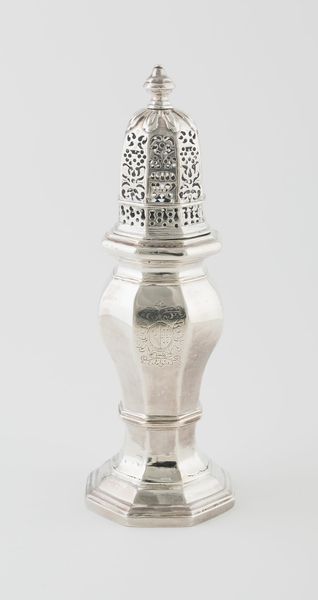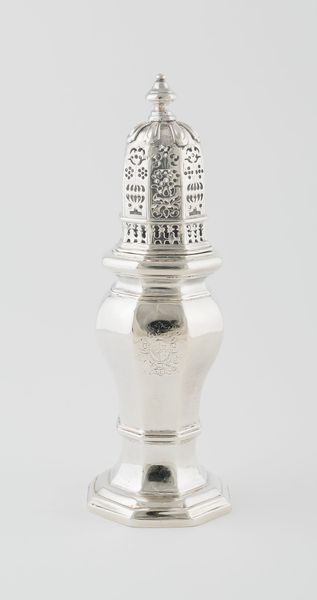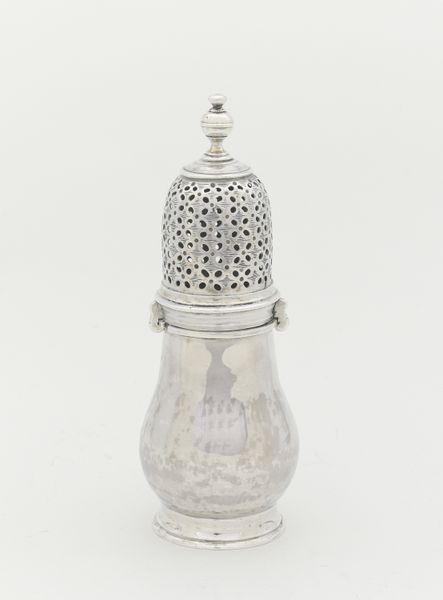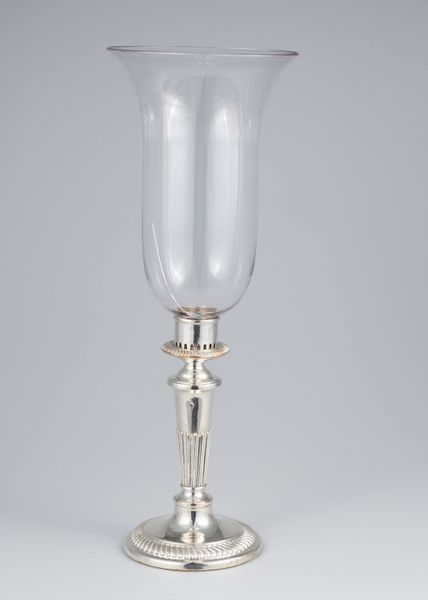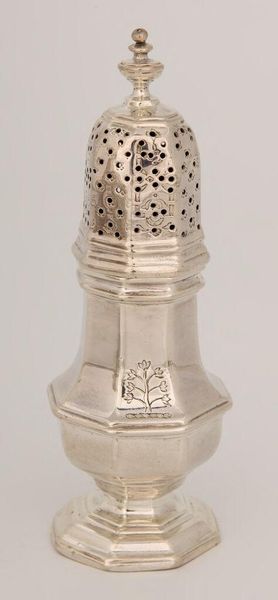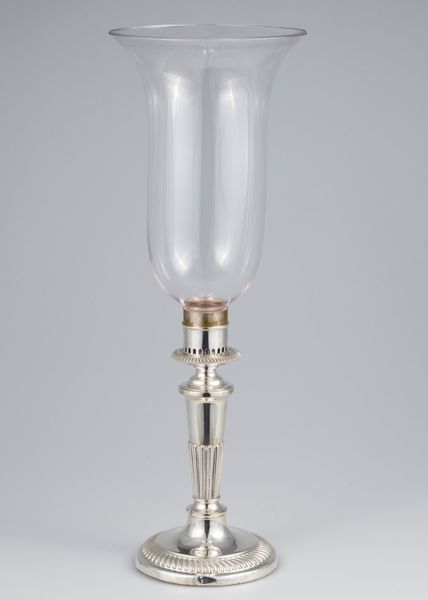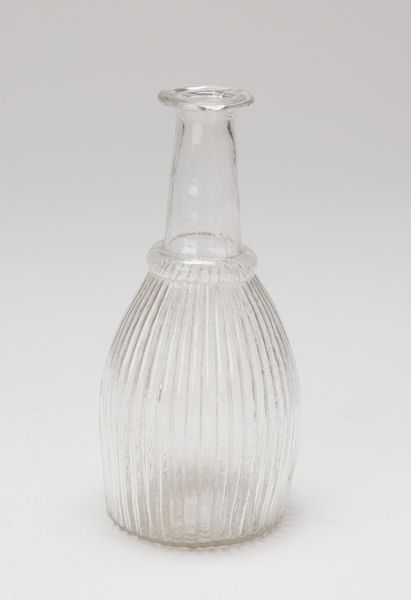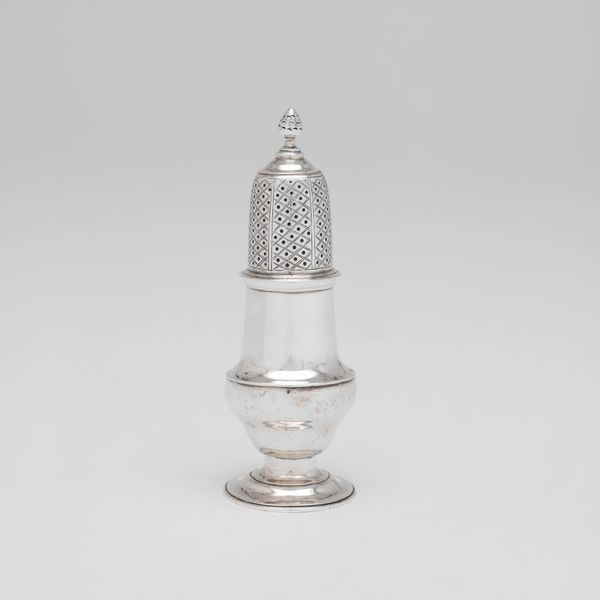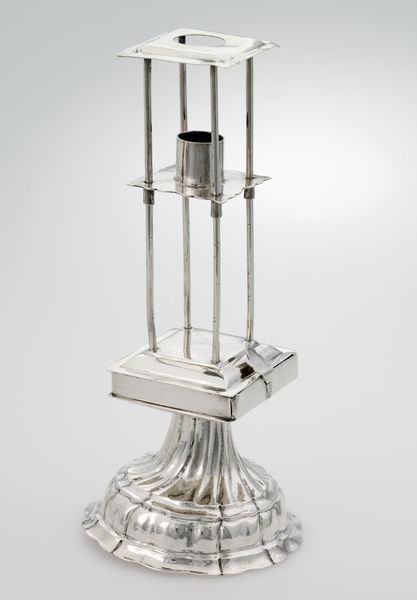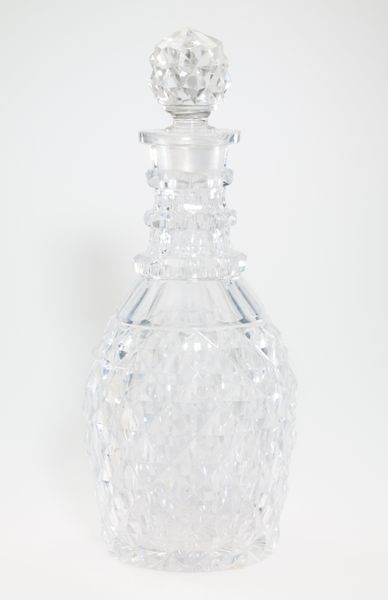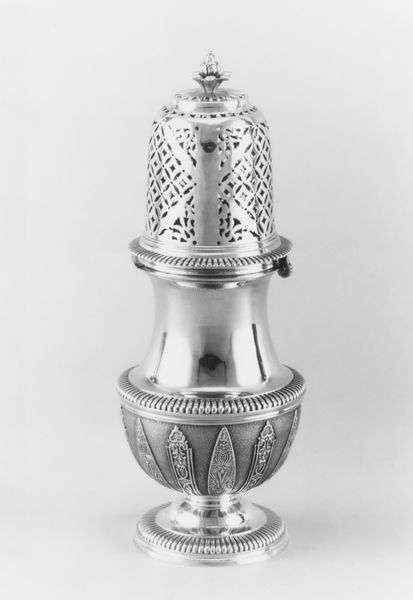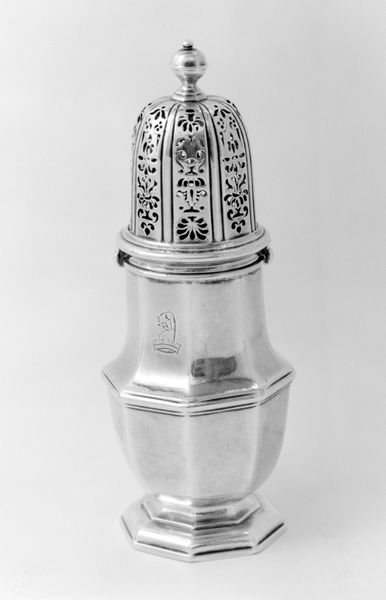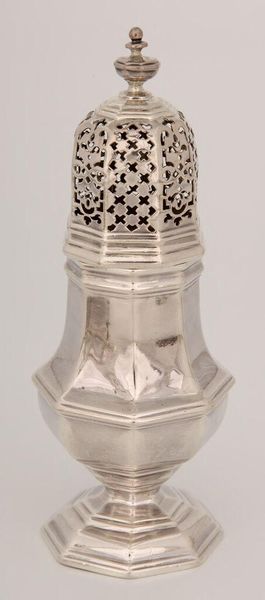
silver
#
silver
#
baroque
#
decorative-art
Dimensions: H. 19.7 cm (7 3/4 in.)
Copyright: Public Domain
Editor: Here we have a striking silver canister, dating back to somewhere between 1704 and 1706. It's part of the decorative arts collection at the Art Institute of Chicago. The silver gleams! It really strikes me as a symbol of wealth and status. How do we contextualize such a piece, given its materials and implied usage? Curator: This is more than just a container. Consider the societal role of refined sugar in the early 18th century. Owning this silver canister, one of three in its set, displayed affluence because sugar was still a costly commodity, an import that signified colonial trade networks. Note the Baroque style—it speaks volumes about status! Editor: You are right, I see the Baroque influence now! It makes me think, how did the ownership and display of such a piece reflect the socio-political power dynamics of the time? Curator: Exactly. The elaborate decoration on the canister served as a visual assertion of the owner's participation in, and benefit from, those power structures. Silverware, prominently displayed, reinforced social hierarchies. Even the act of using it, serving guests sugar, would have been a carefully choreographed performance of status and wealth. Who was invited to partake? What conversations unfolded? Editor: It is fascinating how the object serves as a stage for these social rituals! I am thinking now that something as seemingly innocuous as a sugar canister becomes a potent symbol of social positioning and economic realities, thanks to your explanation! Curator: Indeed. Now you're thinking like a historian! Understanding that this canister's beauty isn't just aesthetic, but also deeply intertwined with power and history, transforms our viewing experience.
Comments
No comments
Be the first to comment and join the conversation on the ultimate creative platform.
